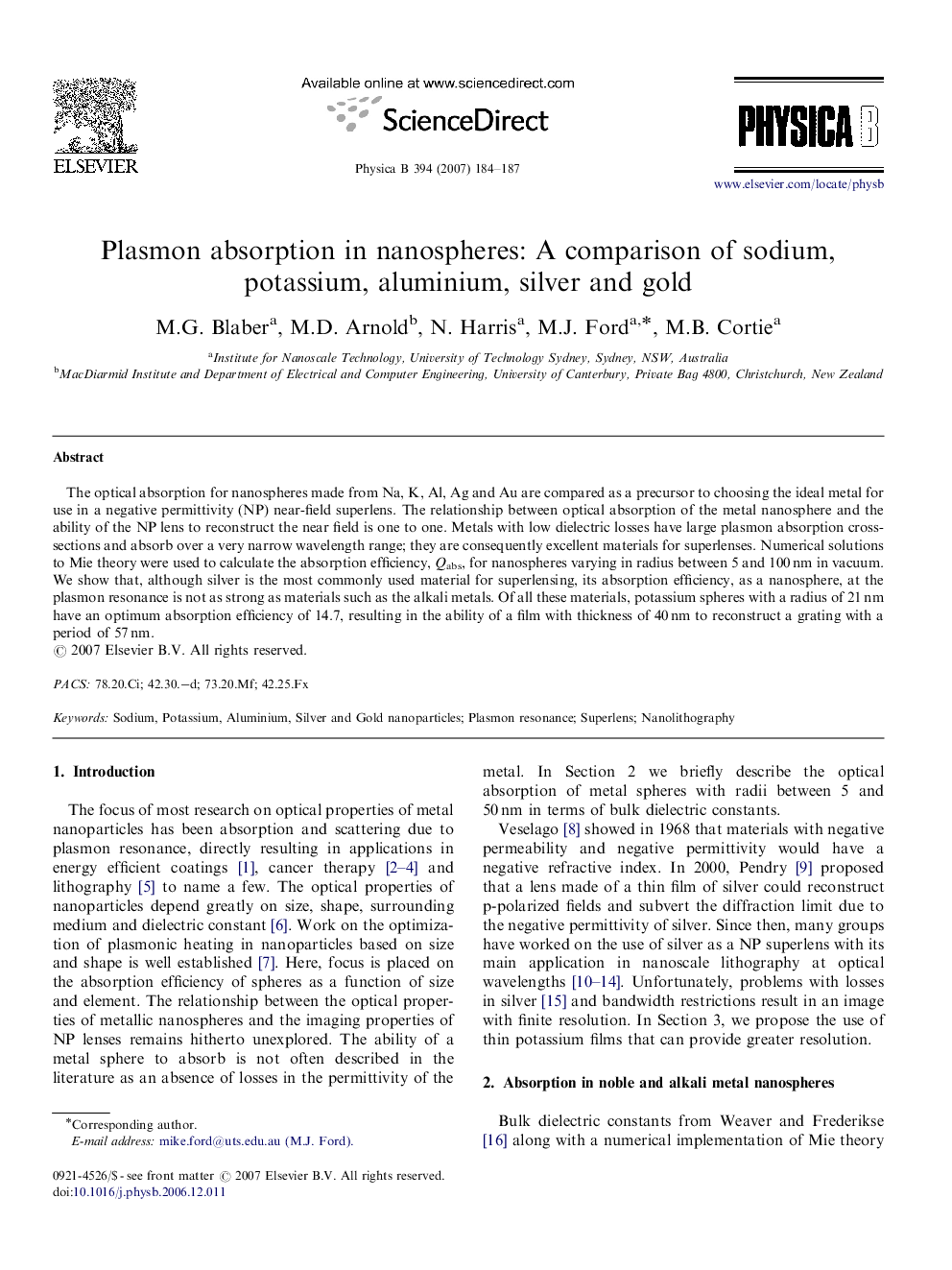| Article ID | Journal | Published Year | Pages | File Type |
|---|---|---|---|---|
| 1815967 | Physica B: Condensed Matter | 2007 | 4 Pages |
The optical absorption for nanospheres made from Na, K, Al, Ag and Au are compared as a precursor to choosing the ideal metal for use in a negative permittivity (NP) near-field superlens. The relationship between optical absorption of the metal nanosphere and the ability of the NP lens to reconstruct the near field is one to one. Metals with low dielectric losses have large plasmon absorption cross-sections and absorb over a very narrow wavelength range; they are consequently excellent materials for superlenses. Numerical solutions to Mie theory were used to calculate the absorption efficiency, Qabs, for nanospheres varying in radius between 5 and 100 nm in vacuum. We show that, although silver is the most commonly used material for superlensing, its absorption efficiency, as a nanosphere, at the plasmon resonance is not as strong as materials such as the alkali metals. Of all these materials, potassium spheres with a radius of 21 nm have an optimum absorption efficiency of 14.7, resulting in the ability of a film with thickness of 40 nm to reconstruct a grating with a period of 57 nm.
